Fish
 From Citizendium
From Citizendium Any aquatic vertebrate animal that is typically ectothermic (or cold-blooded), covered with scales, and equipped with two sets of paired fins and several unpaired fins. Fish are abundant in the sea and in fresh water, with species being known from mountain streams (e.g., char and gudgeon) as well as in the deepest depths of the ocean (e.g., gulpers and anglerfish).
Food prepared from fish is also called fish, and it is an important food source for humans. They are harvested either from wild fisheries (see fishing) or farmed in much the same way as cattle or chickens (see aquaculture). They are also exploited by recreational fishers and fishkeepers, and are exhibited in public aquaria. Fish have had a role in many cultures through the ages, ranging from deities and religious symbols to the subjects of books and popular movies.
The non-profit Environmental Defense Fund (EDF) has a guide[1] to which fish are healthiest (or least safe) to eat, given the state of pollution in today's world, and also which fish are obtained in a way that does not lead towards extinction of the fish.
How fish function[edit]
Specialized functions in fish help them to survive in water. Among these are gills, swim bladders, and the "lateral line system".
Breathing[edit]
Fish breathe by drawing air in through the mouth and passing it over the gills. Oxygen in the water is absorbed by filaments in the gills and passed on to the blood. At the same time, carbon dioxide and other wastes are being expelled. Some species, such as the anabantid family have developed extra breathing organs for collecting oxygen in stagnating waters. For instance, members of the anabantid family have developed a labyrinthine auxiliary organ near the gills that holds atmospheric air gulped from the surface and extracts oxygen from it. Some catfishes also gulp air and extract oxygen in a capillary-rich offshoot of the gut.
Swim bladder[edit]
Most fish have a gas filled bladder that acts as a buoyancy compensation device, enabling the fish to maintain position anywhere in the water. The bladder automatically inflates or deflates to compensate for pressure, equalizing the weight of the fish with that of the surrounding water.
Lateral line system[edit]
A fish's nervous system is linked to the outside world by a series of perforations in a single row of scales known as the lateral line. The line runs horizontally along the length of the fish. Vibrations from the fish's own movements are reflected back from obstacles and detected by nerve endings deep inside the lateral line, similar to ecolocation used by bats.
Osmosis[edit]
A fish's skin acts as a semipermeable membrane, or a one-way transfer system for water. Osmosis causes fluid to diffuse through this membrane until there is an equal concentration on both sides of the membrane. In freshwater fish, the fluid is more concentrated than the liquid in which it lives. Thus, water constantly passes into the fish. To avoid bursting, freshwater fishes excrete as much water as possible and drink little. Conversely, marine fishes lose water to the more concentrated sea water outside, and must drink constantly and excrete little. Few fish can pass from one type of water to the other without at least mild distress.
Adapting to the environment[edit]
The most diverse adaptations to the shape and appearance of fish occur in fresh waters, where fish must cope with high or low water levels, fast or slow water flow, wide temperature ranges, and sparse or dense vegetation. Marine fishes adapt principally for species recognition, camouflage, and defense.
Body shape[edit]
The shape of a fish is the direct result of its environment. Fish that inhabit fast-flowing rivers, for example, are often more streamlined than the disk-shaped fish of shallow backwaters. Freshwater fishes may be flat-bottomed to hug the riverbed; thus avoiding being swept away by strong currents. Species with tall, thin (laterally compressed) bodies are often found living among plant stems in lakes, while fish with flat dorsal profiles swim just below the waters surface.
Self preservation[edit]
Fish have evolved defenses to deal with the dangers posed by predators. Sharp, erectile fins, for example, prevent the hunted from being pried from a safe crevice or swallowed, and some species excrete a poison when danger threatens. Some fish generate electricity (which is used by other species as a navigational aid) to stun their enemies.
Coloration[edit]
The dazzling colors of fish have very practical purposes: recognizing fellow species and camouflage in the face of danger are priorities, but some fish mimic the colors of other fish for predatory ends. Colors intensify at breeding times to warn off others, and patterns may also help young fish recognize their parents.
How fish breed[edit]
A host of subtle adaptations distinguish the breeding methods of different fish families, although there are two general breeding categories. Most fishes (the "egg-layers") lay and fertilize their eggs externally; the eggs of others (the "livebearers") are fertilized and developed inside the female body. The ways in which eggs are fertilized, and young are protected and provided for, differ dramatically in the aquatic world, where predation and cannibalism are rife.
Livebearers[edit]
The anal fin of a male livebearer is often modified to form a reproductive organ called the gonopodium. It is used to inject sperm into the female fish. Gestation takes about a month at average tropical aquarium temperatures, after which the young fry are ejected into the water, ready to fend for themselves. Females of the more popular cultivated livebearers, like guppies and swordtails, are able to store sperm internally and can produce successive broods of fry without remating. These are known as ovoviviparous breeders. For species that cannot store sperm internally (viviparous breeders), mating is necessary for each brood. All developing fry receive nourishment through a type of placenta.
Egg Scattering[edit]
This is the simplest form of egg-laying (or oviparous) reproduction. The eggs (ova) are ejected by the female into the water, usually after a hectic pursuit by the male, which stimulates egg release. They are fertilized by the male's liquid sperm, but only the eggs that float away on currents or fall among plants or pebbles survive; the rest are soon eaten by other fish and even the parents. Many eggs are laid to increase the chances of survival.
Egg burying[edit]
The waters in which egg-buryers live dry up completely once a year. Species survival relise on the fertilized eggs withstanding dehydration, often for months, and then hatching once they are reimmersed in water during the rainy season. In captivity, the eggs from these fish must be collected and stored, nearly dry, for a period of time before rehydration.
Egg-depositing[edit]
Egg-depositing fishes protect their eggs to some degree after they are laid. The fish deposit eggs carefully on the underside of leaves, inside rocky caves, or on the leaves of overhanging plants above the waters surface. Some species use flat surfaces far out in the open water, or even a special pouch carried by the male. Egg guarding and fry-herding are also practiced by this group. Fish that exhibit parental care will often pair off naturally.
Mouth-brooding[edit]
Mouth-brooding females store fertilized effs in their throats until they hatch weeks later. They may abstain from feeding until the fry are free-swimming and, at any hint of danger, the fry seek refuge back in their mothers mouth. Mouth-brooders have no special breeding requirements apart from a separate tank. Male mouth-brooders of the Rift Valley cichlids have egg spots on their anal fins. The female nudges these and so stimulates the release of sperm.
Nest-building[edit]
Tropical fishes build a variety of nests: some dig pits in the sand, while others build bubble nests. Males make a nest of saliva coated bubbles to coax the female beneath them, where eggs are aid, fertilized, and then placed in the nest. Depending on the species, bubble nests may be floating masses or collections of bubbles underneath plant leaves.
Freshwater habitats[edit]
The proportion of fresh water in the world is very small - around two percent. Most of the worlds water is in the oceans. But because of the diverse location, accessibility, and differing qualities of fresh water, the variety of freshwater fishes is vast. Freshwater fishes can cope with a wide range of water locations, qualities, and temperatures, and this adaptability and resilience has made them hardy and very suitable for life in the aquarium.
Types of fresh water[edit]
When water falls from clouds as rain, it is conditioned by the earth upon which it lands. This, in turn, affects the local fishes' tolerance of their water conditions. If water falls on a granitic rock its composition is altered very little, and it remains soft. But when it permeates limestone, it absorbs calcium, which makes it alkaline and hard. Peaty soil will acidify water, as will the rotting vegetation typically found in slow moving streams. Fishes from such streams, including most aquarium fishes such as barbs and rasboras, will, therefore, tolerate acidity in their aquarium water. Lakes with no inflow or outflow of water from rivers, as in the Rift Valley of Africa, have a high mineral content that must be emulated in captivity using commercial mixes. Estuarine waters are regularly altered by tidal additions of seawater, and fish from these environments, such as the Mono and the Scat, appreciate a small addition of salt in their water. By the time rain water reaches the sea, it is of an entirely different composition. Once there, it evaporates and begins its journey back through the water cycle.
Effects of temperature[edit]
Changes in temperature may also significantly alter the freshwater habitat: where the volume of water is small, the differences between night and day temperatures are greater. More drastic fluctuations include the melting of mountain snows, which add cool water to rivers.
Marine habitats[edit]
Covering approximately 77 percent of the Earth's surface, the saltwater oceans are regarded as a highly stable environment with only minor fluctuations in salinity. The vast ocean waters soon dilute the pollution of fish wastes and decaying organic matter.
Supply of Species[edit]
Most marine species available for the marine aquarium come from shallow coastal waters near coral reefs, where fish can be captured easily. Unlike many freshwater fishes, most marine species are still caught from the wild. Despite the attraction and commercial value of their fantastic colors and unusual shapes, marine fishes have proven difficult to breed cost-effectively in captivity, and certainly not in the numbers required for commercial supply.
Specialized feeding[edit]
Many marine species eat specific foods, such as sponges, algae, and even the coral itself. Parrotfishes, for example, are beautiful and easy to collect, but they feed only on algae growing on coral rubble. Other fishes with specialized feeding habits, such as the sponge-eating Atlantic angelfishes and the polyp-eating butterflyfishes can adapt to aquarium life if captured very young.
Pools of life[edit]
On seashores in all temperate zones, receding tides leave behind tidal pools. These are ecosystems in their own right, containing easily caught schooling fishes, colorful seaweeds and algae, and unusual invertebrates. Although tidal pool dwellers are not as brightly colored as their tropical counterparts, their diverse sheltering and feeding techniques provide a special fascination.
How fish are grouped[edit]
All fish are defined by their scientific species name, which is recognized worldwide. Similar species are grouped into "genera," which in turn are grouped into families, as shown below. Characteristics of some of the main groups are set out below the Taxonomy section.
Taxonomy[edit]
Freshwater Fishes[edit]
Cyprinids[edit]
The cyprinid family contains around 1,300 species, widely distributed on most continents of the world. They inhabit all types of waters and adapt readily to various water conditions.
The body shape is conventional, with symmetrical contours, but it may be slender or quite deep, depending on habitat. Cyprinids have seven fins: two sets of paired fins and three single ones. Pharyngeal teeth in the throat grind food before it reaches the intestine. The arrangement of these teeth provides positive identification between similar species.
Coldwater cyprinids include the most popular aquarium fishes of all, the Goldfishes and Koi. Tropical cyprinids are divided into three main groups: barbs, which are like miniature carp, inhabit the middle and lower water levels; danios are faster swimming and prefer the upper levels; and rasboras use all water levels. All cyprinids spawn using egg scattering methods and do not usually exercise parental care.
Characins[edit]
The characin family includes around 1,300 species, distributed across Central and South America, and Africa. Most of these fishes school in lakes and rivers.
Body shapes and sizes vary considerably, from 2 in (5 cm) long pencilfishes to the stocky African distichodus species, which measure 16 in (41 cm). Piranhas and pacus are muscular and heavily built to facilitate the tearing of flesh or fruits. Other characins , in contrast, may persistently eat aquarium plants. Characins have sharp teeth in the jaws and mos have an extra fin, known as the adipose fin, on the back. The family contains many popular fishes, including the tetras, of which the brilliant Neon and Cardinal Tetras are prime examples.
Most characins spawn using egg-scattering methods. The male may have tiny hooks on the anal fin to hold the female against him during spawning. The eggs are adhesive and usually lodge among plants. One exception is the Splashing Tetra, which deposits eggs on a firm surface out of the water, to protect them from the attentions of aquatic predators.
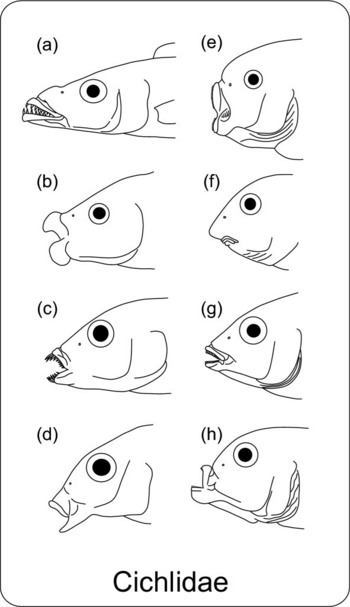
Diversity of the skull in the Cichlidae. (a) Rhamphochromis macrophthalmus, a piscivore, (b) Haplochromis euchilus, a digger in sand, (c) Labidochromis vellicans, a picker of small arthropods, (d) Lethrinops brevis, a digger in sand, (e) Petrotilapia tridentiger, a rock scraper, (f) Labeotropheus fuelleborni, an algal-eating rock scraper, (g) Haplochromis similis, a leaf chopper, (h) Genyochromis mento, a scale eater.
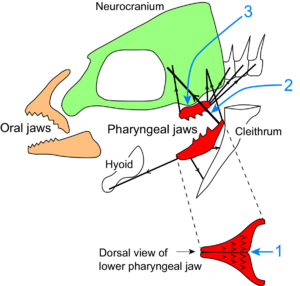
Diagrammatic representation of the principal components of the specifically modified pharyngeal jaw apparatus of cichlids. Red elements are the upper and lower pharyngeal jaws. The muscles organizing the pharyngeal jaw apparatus are represented as black thick lines, and the principal directions of force have been indicated by arrows. Numbers indicate three major features of the specialized "labroid" pharyngeal jaw apparatus: 1) the left and right lower jaw elements are fused into a single structure, 2) the lower jaw is suspended in a muscular sling that runs from the neurocranium to the posterior muscular arms of the lower jaw, and 3) the upper jaw elements have a diarthrotic articulation with the underside of the neurocranium.
The 1,000 or more members of the cichlid family are native to Central and South America, Africa, Asia, and parts of the USA. Most will acclimatize well to domestic tap water, although some species, such as the discus fish, need carefully controlled water.
The colors, shapes, and sizes of cichlids vary enormously, although they tend to be heavily built. Some grow to large for the average community tank, while others breed readily among other fishes in any aquarium. Male cichlids from the Americas may have longer, more pointed dorsal and anal fins, while male African Rift Valley cichlids often have yellow or orange spots on the anal fin. There is plenty of opportunity for specialization within this family: Rift Valley cichlids, for example, prefer hard water and rocky furnishings. Many are herbivorous, requiring vegetable foods. Cichlids are hearty eaters and produce a lot of waste, which calls for frequent water changes. Generally these fishes reproduce by egg-depositing, but they display diverse methods of breeding, all of which involve a high degree of parental care.
Anabantids[edit]
Fishes within this group of families often inhabit oxygen depleted waters of Africa and Asia. They possess an auxiliary breathing organ that enables them to use atmospheric air gulped at the surface. This "labyrinth organ" is a folded mass of bone and capillary-rich tissue, situated internally near the gills. Its function is to store air and extract oxygen.
The Asiatic anabantids are usually peaceful and swim gracefully. Gouramies have threadlike pelvic fins with taste cells at the tips. A few other Asian species make croaking noises when they are breeding or when removed from the water. African species are larger and are stealthy predators, often with spectacular colors and patterns.
Most anabantids build floating bubble nests in which the eggs are deposited. The male spurns the female once spawning is completed. He may even kill her as he takes on responsibility for guarding the eggs in the nest. An exception is the mouth-brooding Chocolate Gourami.
Killifishes[edit]
Killi is a Dutch word meaning "stream" or brook, but the 300 killifish members of the family Cyprinodontidae in fact inhabit a great variety of waters. These include ephemeral ponds, brackish marshes, lakes, and rivers of the Americas, Africa, Asia, and warmer parts of Europe. Their small cylindrical bodies have upturned mouths for surface feeding. Males are usually more brilliantly colored. In captivity, killifishes accept most types of food. They lay eggs in plants or in the substrate. In both cases, eggs may take weeks or months to hatch and they can survive periods of almost total dehydration. Many subspecies of various coloration have led to confusion with identification.
Catfishes[edit]
The catfish family contains around 2,000 members, which include some of the more unusual aquarium attractions: certain species swim upside down; some can maneuver on land; and others can emit sound or use electricity to kill. All are from the Americas, Africa, and Asia and share the common characteristic of bottom-dwelling. Many are surprisingly gregarious and enjoy being kept in numbers, but some catfish are nocturnal, and their regular activities often go unnoticed. Catfishes are identifiable by the barbels around their mouths, which allow them to locate food in the dark. Instead of scales, the skin may be naked or covered with bony plates, or scutes. They often use oxygen that is gulped at the surface and extracted in the gut. Usually omnivorous, some species are herbivorous and are useful in controlling algae. Catfishes spawn in several ways, including egg-depositing and bubble nest building.
Loaches[edit]
Loaches are fish families in the order of the Cypriniformes. The various species of loach that are available to the aquarist come from India and Asia. They spend most of their time on the bottom of rivers and streambeds, hence their flat-bottomed bodies. A distinctive characteristic of this family is the erectile spine beneath the eye. It acts as a deterrent to predators, but it also tends to catch in the fish-keeper's net. The mouths of loaches are downturned and have barbels for detecting food.
Like anabantids and some catfishes, loaches can gulp atmospheric air at the water's surface and extract oxygen from it as it passes through the gut. Many species are nocturnal and hide among plants and rocks by day, emerging as darkness falls or when food appears at close range. Their natural diet includes worms and insects, but most loaches will accept prepared foods in captivity, especially tablets and other quick sinking forms.
Little is known of their reproductive behavior, but loaches have been induced to spawn in captivity by using hormone injections. Loaches in the Botia genus are long-established aquarium favorites.
Other tropical egg-laying species[edit]
Many egg-laying fishes are monotypic - occurring as a single species within their genus. Some genera contain very few species and other species do not fit conveniently into the major fish groups.
There is an extraordinary variety of fishes to choose for the aquarium within this category, from both brackish and fresh waters. Their physical characteristics are too varied to describe in general terms. These species are sometimes kept by hobbyists as interim choices before graduating to the more demanding field of marine fish-keeping.
They have been chosen to demonstrate the range of fishes available to enliven even the smallest aquarium. Commercial availability of some of these species may be limited.
Tropical livebearers[edit]
Livebearing fishes are native to the Americas, from New Jersey down to Brazil, and in east Asia. They have been introduced into other tropical areas to combat malaria, as livebearers eat the waterborne larvae of disease-carrying mosquitoes.
Females are usually longer than males, but the latter have more striking colors and patterns, and often have longer fins. Most livebearers adapt well to the aquarium and will thrive in hard water. Feeding is uncomplicated, but these fishes appreciate the addition of vegetable matter.
A main attraction of these fishes is their propensity to breed in captivity, especially the brilliantly colored, aquarium-developed strains of guppies, mollies, platys, and swordtails. It is advisable to move a gravid female into a separate nursery tank for birthing. This should be heavily planted to shield the young from their hungry mother.
Coldwater freshwater fishes[edit]
The popularity of ornamental coldwater fishes sustained the aquarium hobby for hundreds of years until the tropical varieties were introduced in the 19th century. Coldwater aquarium species are mostly cultivated varieties of the Common Goldfish (Carassius auratus), a member of the cyprinid family originating in Asia. A near relative in the same family, the Koi (Cyprinus carpio) has been developed in Japan, although it is generally kept in the outdoor pond rather than the aquarium. Koi are traditionally viewed and judged from above and their colors are developed accordingly. Goldfishes and Koi are long-lived and adapt well to aquarium and pond culture. No standard size descriptions can be made, as they generally grow to the limits of their environment, and no habitat can be given as they are aquarium developed.
A number of species from temperate regions of North America, Europe, and Japan have recently become popular as aquarium fish. There may be local laws against selling some species or removing them from their habitat.
Marine Fishes[edit]
Tropical marine fishes[edit]
Marine fishes are the most beautiful candidates for the aquarium, but they are also the most intolerant of changes in water quality. Keeping them is a specialization that should be approached gradually and informatively. Beginning with the more hardy species is less expensive, and is educational.
Tropical marine fishes generally come from coral reefs and coastal areas throughout the tropical oceans of the world. The choice of shapes, sizes, and colors is extensive, and the question of compatibility must be considered during selection. Many marine fishes are territorial, and the may be intolerant of other members of the same species. Hiding places should always be provided. Some species form natural relationships with other fishes or invertebrates, and these may be kept together: anemone-fishes, for example, appreciate the addition of sea anemones.
The breeding of these fishes is often restricted to anemonefishes and gobies.
Coldwater marine fishes[edit]
Fish-keepers who live near the seashore may be able to collect species from pools that are isolated by receding tides. If these species outgrow the aquarium, they can easily be returned to the shore. The selection of species described in this section does not represent all temperate coastal regions but is offered as an indication of the variety of species that can be collected by the fish-keeper. Generally speaking, it is likely that coldwater fishes will be rather subdues in color compared with their tropical relatives. A mottled brown coloration is generally the norm.
Most coldwater marine fishes depend on rocky retreats, so these should be provided in the aquarium. A fine, deep substrate will enable burrowing fishes, like the wrasse, to feel secure. As with tropical aquariums, you can add invertebrates for interest: sea anemones, shrimps, starfish, and small crabs can be included to enliven a coldwater marine scene. Native marine fishes can be kept fairly cheaply in a medium to large tank. Coldwater marine aquariums must be checked for overheating during the summer.
Bibliography[edit]
- Rogers, Geoff, 1994- Focus on freshwater aquarium fish
- Bailey, Mary, 1999- The ultimate encyclopedia of aquarium fish & fish care
Related Articles[edit]
Parent topics[edit]
- Organism [r]: An individual living individual: a complex, adaptive physical system that acts a integrated unit that sustains metabolism and reproduces progeny that resemble it. [e]
- Animal [r]: A multicellular organism that feeds on other organisms, and is distinguished from plants, fungi, and unicellular organisms. [e]
- Chordata [r]: Add brief definition or description
- Vertebrata [r]: Add brief definition or description
- Gnathostomata [r]: Add brief definition or description
Subtopics[edit]
- Cyprinids [r]: Any fish in the family Cyprinidae (also called Cypriniformes). [e]
- Characins [r]: Family of freshwater subtropical and tropical fish, belonging to the order Characiformes. [e]
- Cichlids [r]: Pronounced 'SICK lids', family Cichlidae, various tropical/subtropical fishes, some popular for home aquariums. [e]
- Anabantids [r]: Fish with a breathing organ enabling them to use atmospheric air gulped at the surface. [e]
- Killifishes [r]: Name for around 300 members of the family Cyprinodontidae that inhabit a great variety of waters including ephemeral ponds, brackish marshes, lakes, and rivers of the Americas, Africa, Asia, and warmer parts of Europe. [e]
- Catfishes [r]: Family of fish containing around 2,000 members. [e]
- Loaches [r]: Air-gulping, flat-bottomed fish families in the Cypriniforme order with an erectile spine between the eyes. [e]
- Monotypic tropical egg-laying fish [r]: Add brief definition or description
- Livebearing fish [r]: Type of fish native to the Americas and east Asia which have been introduced into other tropical areas to combat malaria as they eat the waterborne larvae of disease-carrying mosquitoes. [e]
- Coldwater freshwater fishes [r]: Add brief definition or description
- Tropical marine fishes [r]: Add brief definition or description
- Coldwater marine fishes [r]: Add brief definition or description
[edit]
- Agkistrodon piscivorus conanti [r]: A subspecies of the cottonmouth (Agkistrodon piscivorus) found east of the Mississippi River. [e]
- Commercial fishing [r]: The harvesting of edible marine life on a commercial basis, usually using purpose-built vessels and equipment [e]
- Cryoprotectant [r]: A substance that protects biological tissue from freezing damage. [e]
- Ectothermy [r]: Add brief definition or description
- Food [r]: Add brief definition or description
- Pet [r]: Add brief definition or description
- Recipe [r]: Add brief definition or description
- Sushi [r]: Add brief definition or description
Notes[edit]
- ↑ EDF Seafood Selector: Fish Choices that are Good for You and the Oceans on the Environmental Defense Fund (EDF) website. Last access 1/21/2024.
↧ Download as ZWI file | Last modified: 09/23/2024 19:56:25 | 42 views
☰ Source: https://citizendium.org/wiki/Fish | License: CC BY-SA 3.0
.jpg)
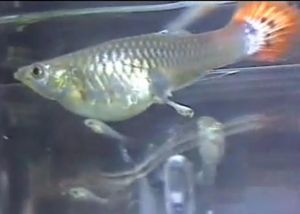

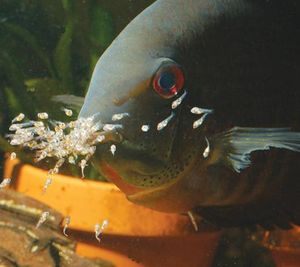
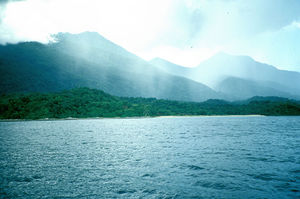
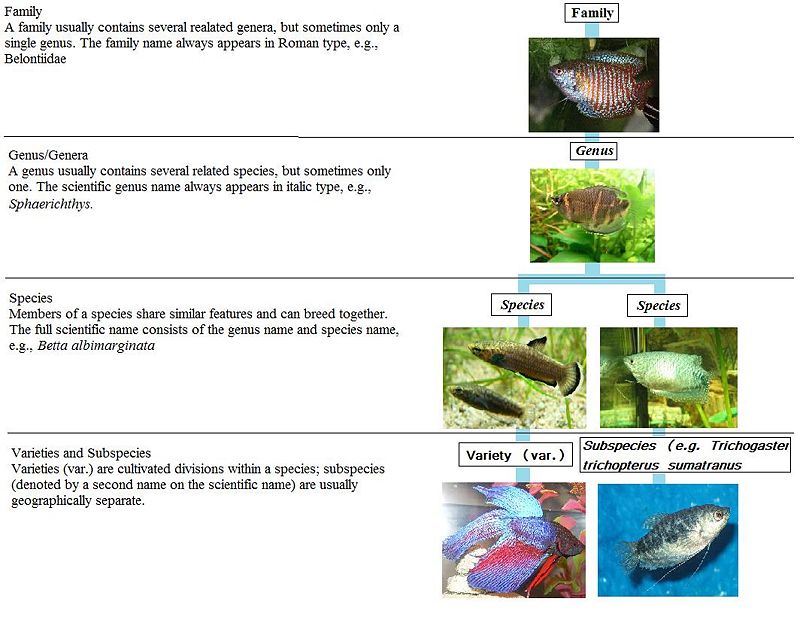
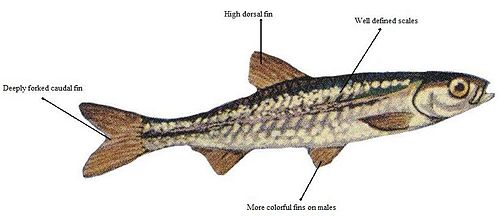
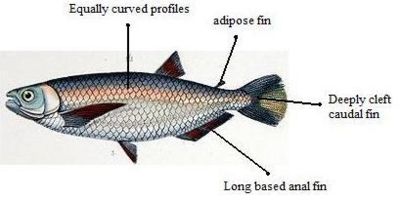
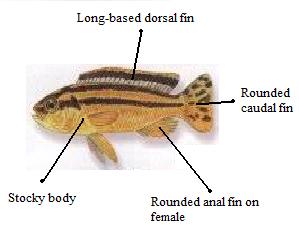



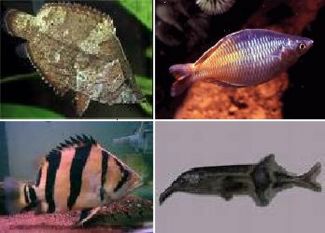


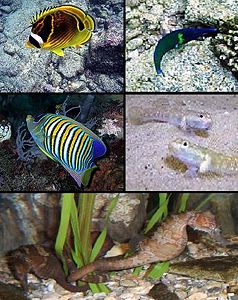
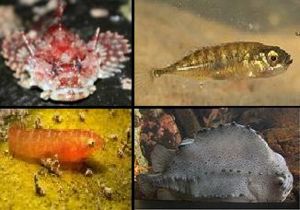
 KSF
KSF